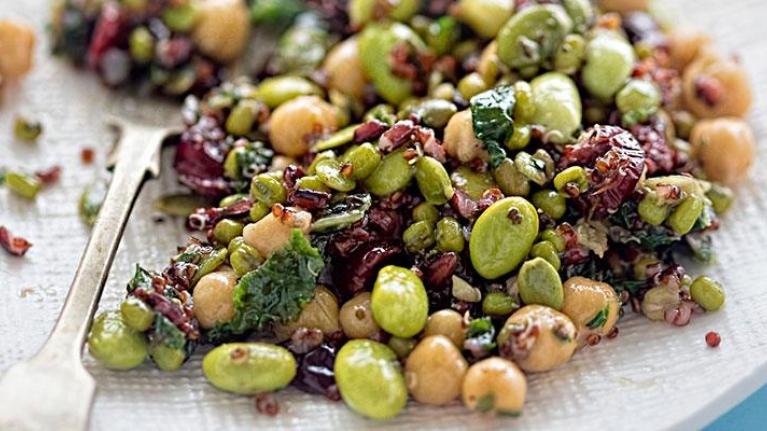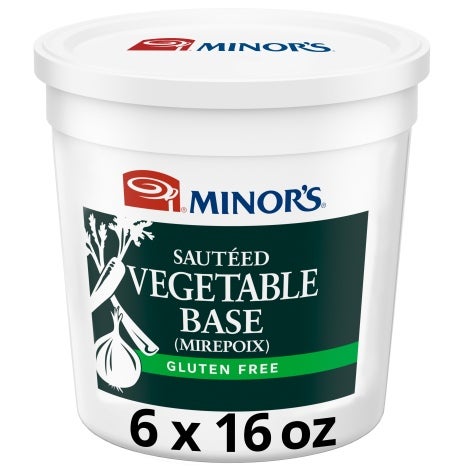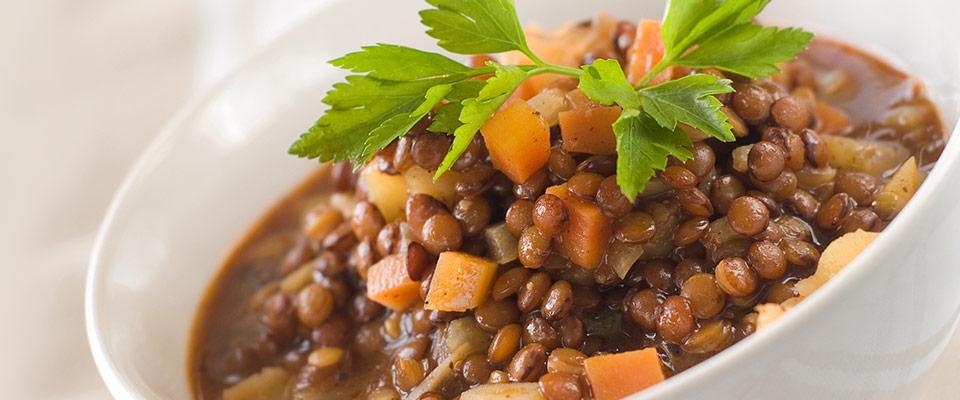
Grains Are Growing. So Is Customer Demand
Grains are gaining in popularity and usage. Quinoa, couscous, farro, and spelt have joined rice and barley on our plates. Get the latest on grains, old and new.
If the idea of adding more grains to the menu makes you think of couscous, quinoa salad, or tabbouleh, you’re right—but only partially.
Grains have been growing on menus at a healthy 15% clip for more than a decade, according to Datassential, and now appear on 17.6% of all menus, compared with 10.3% in 2007. Menu formats range from whole-grain buns and wraps to grain side dishes and grains mixed into soups, salads, and meatless “burger” patties, to say nothing of newly popular grain bowls.
“You can do a whole lot more with grains these days,” explains Nestlé Professional corporate executive chef Kevin Wassler. “They can be used in a variety of different ways that are delicious, on-trend, and relatable, as well as healthy and nutritious. And there are so many different kinds of grains available, from ancient grains like spelt and farro to familiar rice and barley.
“People think that grains don’t taste like anything, but part of their appeal is that neutral flavor, which makes it easy to incorporate interesting flavors and ingredients,” adds Wassler. “And most grains have very distinctive textures to play with.”
That makes grains of all types the perfect building block for craveable signature dishes, like the Grain & Andouille Hash recipe that the chef created recently. Loaded with sautéed vegetables and flavorful andouille sausage, a grain blend gets next-level appeal when topped with poached eggs and a spicy adobo-laced Hollandaise sauce.
Wassler shares some additional ideas for getting the most out of grains:
- Experiment with different kinds of grains, from delicate millet to hearty wheat berries. While some may be interchangeable, other varieties are worthy of their own creative menuing strategies.
For more information on tapping the power of grains, see below.
- For interesting texture and eye appeal, combine several different grains into a blend.
- Add flavor by using a Minor’s® base to create stock for a cooking medium. The product lineup includes vegetarian options as well as chicken, beef, and more.
- Most grains can be toasted first in olive oil or butter to add flavor complexity, then cooked pilaf-style in stock or other seasoned liquid.
- Use flavor-layering techniques to build craveable grain specialties. Rather than simply offering plain steamed couscous, for instance, sauté onions in olive oil, add the grains to toast them, then measure in stock and additional spices, chiles, or aromatics, and simmer until the grain is tender. Fold in flavorful additions such as pine nuts and chopped dried apricots, then finish with flavored butter, pesto, or tahini dressing.
- Cooked grains can be turned into a salad with the addition of ingredients such as cooked or raw vegetables, protein (such as feta cheese, poached shrimp, or grilled chicken), nuts, seeds, dried fruit, citrus zest, olives, and more, then tossed with a simple vinaigrette. In fact, this represents a great way to cross-utilize ingredients that may have been prepared for other menu items—including sauces and dressings.
- Offer grains as a side dish, instead of fries, mashed potatoes, or other spuds. Whether à la carte or part of a curated plate, use grains on the side to switch things up.
- Grains and vegetables go together beautifully to create meatless specialties or a vegetable-only upgrade. Experiment with veggies like kale, eggplant, peppers, mushrooms, onions, tomatoes, summer or winter squash, cucumbers and other salad vegetables, and root vegetables such as carrots and turnips. Fresh herbs will add another dimension in flavor.
- Don’t forget rice. In the rush to embrace newly trendy grains such as quinoa and teff, it’s easy to lose sight of all the interesting rice varieties, including not only brown and white rice, but also specialties such as pecan rice, basmati, wild rice, Forbidden Black Rice, and more.
- Grains are the perfect addition to action and exhibition stations, food bars, DIY bowls, and other customized menu concepts, providing a sturdy, neutral platform that welcomes the addition of other ingredients. Grains are also particularly useful for appealing to vegetarian and vegan diners, as well as those who are avoiding gluten.
- Utilize grains in combination with beans and other ingredients in vegetarian burgers, meatballs and meatloaf, croquettes, casseroles, and other meatless options.
- Grains can add body and heft, texture, and even protein to soups, including popular classics such as Beef Barley and Chicken & Wild Rice Soup.
- Take inspiration from the many global specialties that are based on grains, especially rice, such as paella, jambalaya, fried rice, and more.
- Explore grains on the breakfast menu, as an addition or alternative to oatmeal, with porridge, grain bowls, and grain parfaits paired with fresh or dried fruit, nuts or nut milk, yogurt, heavy cream, brown sugar or maple syrup, or savory additions such as cheese, chopped bacon, and scallions.
Source: Datassential, “Grain: The SNAP Food Profile,” 2017
Confused about cooking methods for different grains? This Ancient Grains Cooking Table (PDF) will help.
The easy route to flavorful stock starts with Minor’s and Maggi® bases.
Add flavor to grain dishes with Minor’s Flavor Concentrates, combined with stock or another cooking liquid.
Minor’s bases, sauces, and flavor concentrates are Ready to Flavor, meaning that they can be used in cold applications such as salads without the added step of cooking.
Compound butter can be used to add a finishing jolt of flavor to hot grain specialties.
The Nestlé Professional Wellness Bar (PDF) and Salad (PDF) action stations include healthy whole grain options.



